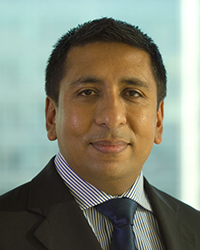What is it Really Like Working with a Fintech?
Roundtable Debate
Innovations in treasury technology and processes are vital for future-proofing the function. But how can treasurers decide who to partner with – banks, vendors or fintechs – to help implement cutting-edge solutions? Or should they innovate in-house? TMI’s Innovation Lab brought together three experts from different fields to fight their corner in this debate, while exploring how fintechs slot into the treasury ecosystem.
Participants:
Gerard Tuinenburg, Director Systems, Innovations and Transactional Banking, Unilever Treasury
Mario Benedict, Head of APIs and Open Banking, EMEA- Digital Solutions, Wholesale Payments, J.P. Morgan
Zitah McMillan, Co-Founder and CEO, Predictive Black (a fintech that offers an AI-powered financial solution to transform cash-related data into a dynamic vehicle for growth and value creation – in real-time)
Moderator:
Eleanor Hill, Editor, TMI
Eleanor Hill (EH): Why is it actually important to be innovative in corporate treasury? Is it ever OK for treasurers NOT to innovate – or to be slow in adopting innovations?
Mario Benedict (MB): Speaking to clients, the pandemic has accelerated the thought process around innovation enormously. Previously, any kind of digital transformation project came from the top of the house, but this is now driven by corporate treasury. Automating and streamlining processes is arguably more critical than ever, especially in the era of real-time data. This makes it very tough not to innovate – in fact, innovation is becoming an integral part of the treasurer’s role. And from a corporate perspective, now is a great time to think about innovation and how to make use of innovative treasury technologies, such as application programming interfaces (APIs), to add value to the organisation.
Gerard Tuinenburg (GT): I agree with Mario. While treasurers may have been more reactive in the past, there is now increased pressure on the operational side to be more proactive. Business models are changing, with the growth of e-commerce being a prominent example, which is driving change in treasury. Rather than being a reactive cost centre, there are increasing strategic demands being placed on treasurers and they are expected to come up with innovative ideas and analysis that support the company’s growth ambitions.
Zitah McMillan (ZM): We also need to be honest about what we mean by innovation. On the one hand there is ‘out there’ innovation, where fintechs are experimenting with cutting-edge technology that could sometimes be considered too innovative for treasury. But on the other hand, there is tried-and-tested innovation that can add concrete benefits to treasury operations right now. It’s important to recognise that there are levels of innovation. We shouldn’t allow the word to be a deterrent to progress itself. Sometimes the innate bias to avoid risk will mean we avoid innovation because it sounds like it’s going to be a high-risk, resource-heavy project. In reality, innovation is about getting what you need, when you need it and solving a specific problem you have. It may be an effective solution, or it may just be a better version of what you’ve got today. That’s true innovation.
GT: That’s a good point. Within corporate treasury, processes are relatively small in nature, but are part of a group-wide workflow. As such, it’s very difficult to make a complete change to such a process and to be radically innovative. But a small change can often be ‘good enough’. Innovation doesn’t have to be earth shattering, also smaller continuous improvement activities can add a lot of value.

Mario Benedict
Head of APIs and Open Banking, EMEA- Digital Solutions, Wholesale Payments, J.P. Morgan
EH: What would you say is the number one area where treasurers want more innovation today?
GT: In fairness, there is a lot of innovation happening already. Mario touched upon APIs and the era of instant information and this is a critical topic for treasurers in terms of real-time cash and liquidity – not least because of increased volatility caused by the Covid-19 pandemic. As well as having current visibility over cash, the predictive side of things is incredibly important. It’s relatively easy to report on your past because it’s on the balance sheet and in your TMS [treasury management system] as a transaction. The harder part is to know what’s going to happen in the future with your cash forecast or with your working capital. Being able to operate in real-time and to enhance forecasting models for better accuracy in liquidity management are two key areas where corporate treasurers would appreciate further innovation, in my view.
ZM: Absolutely. The predictive element is something almost all treasurers seem to be yearning for, because it’s something that most teams don’t feel they are able to accomplish themselves. It’s here that treasurers will look to bring in external resources that enable them to generate reliable predictive models. But to have the predictive capabilities, you need the real-time data first. There are a lot of companies which aren’t quite there yet and they need to make a step change before they can progress to the predictive element.
Some treasurers also find the predictive modelling side of things to be uncomfortable because some of the ‘thinking’ is carried out by a component that is based on machine learning [ML] or artificial intelligence [AI], since that’s where the power lies. Personally, I’m interested in exploring how to encourage treasurers on that journey towards adopting more predictive looking data and how they put it to use. There’s no point having it if you’re not going to use it.
GT: At Unilever, we have a team called the Automation Factory, which is based in India. It started about four years ago with five people and has grown rapidly since. This team looks at robotic process automation – RPA – but also at in-house predictive and cognitive analysis such as ML and AI, for the whole of Unilever. The Automation Factory focuses a lot of time on the supply chain, but departments throughout the organisation can leverage its expertise. From a treasury point of view, we have also worked on RPA projects with them. For example, we’ve had discussions about working capital and looking to introduce predictive capabilities for debtor and creditor management.
MB: I agree with what Gerald said earlier, that real-time treasury is the number one area of focus for most treasury functions right now. At J.P. Morgan, we are hugely focused on how we provide the real-time data to our clients. But, as Zitah also said, the real question is ‘what do you do with that data’? Unless you have that forward-thinking mindset within treasury, and the sponsorship within the organisation, like Gerard’s example from Unilever, it can be tough to use the data to great advantage.

Gerard Tuinenburg
Director Systems, Innovations and Transactional Banking, Unilever Treasury
EH: What benefits does collaboration between banks and fintechs bring for corporate treasurers?
MB: One of our main innovation strategies is co-creation. The days when banks would innovate behind closed doors, and then bring a new product onto the market for all clients, are gone. Today, it’s all about how you co-create with a corporate client, meaning how do you solve a particular client issue in collaboration. Often this will involve working alongside a fintech.
I think clients, like Unilever, are increasingly comfortable dealing with a fintech if it’s already aligned with a bank’s products. Not only does this benefit the fintech, but if it is successful then we can replicate that for our clients, so there are huge benefits in collaboration.
GT: Banks and fintechs working together provides the best of both worlds. You get the entrepreneurial drive and the systems on the fintech side, and the stability to the partnership on the bank side.
EH: Would you consider working directly with a fintech these days, without the bank partnership?
GT: Absolutely – as an example, we use a specialised TMS, but the cash forecasting module in that solution is not as good as we need it to be. So, we reached out to Cashforce, a fintech specialising in forecasting software, and we will start using their tool later this year. What we want to have included in our new set-up is an API connection with the banks that links with Cashforce and we are talking with Mario and our other bankers to arrange this at the moment.
MB: Yes, that’s a fantastic example – and it also points out how banks can support fintech solutions behind the scenes.
GT: It is quite obvious which banks have invested in this area – and which haven’t. In my experience, the large US banks seem to be a little further ahead when it comes to the ability to use APIs to connect with corporates and fintechs.

Zitah McMillan
Co-Founder and CEO, Predictive Black
EH: Zitah, from your perspective, how do you feel about working with a bank? What are you seeing in terms of treasurers wanting to work directly with a company like Predictive Black?
ZM: Being part of the fintech community, I’m starting to observe a maturity that I think had been lacking previously. A few years ago, being a fintech meant that you needed to be hugely disruptive, and some fintechs might not have wanted to work with big corporate partners back then. Things have changed. There is a greater degree of respect from fintechs now for what the banks and the large corporate partners can provide to their own business. There’s also a recognition, as Mario and Gerard have said, that we can do good things by collaborating together on behalf of clients. I think both sides have reached a sort of unspoken agreement – and that’s brilliant.
EH: How can we measure the success of an innovation? It can be quite difficult to look at ROI [return on investment] or pick up some of the softer benefits, for example. And how can we tell when an innovation has run its course?
ZM: From my perspective, there’s still too much on the output rather than the outcome of the process. The end benefits may take some time to emerge and people have a tendency to get bored by the time you get there. Hopefully Mario can tell me I’m completely wrong, but I feel that a lot of the innovation measures are still quite old school!
MB: I have to agree. Innovation is just measured like any other product roll-out. But it is a much longer-term project. Take our API investment, for example. We continue to invest in APIs and open banking, as we have done for several years. Innovation requires a longer-term mindset.
You have to celebrate the small wins, because it is a journey. Another important point is knowing that it’s OK to fail when innovating, but we always say to ‘fail fast’. If you try something and it doesn’t work, it’s OK to admit that and find another angle to explore. It isn’t failure, you’ve proved that the concept hasn’t worked and you then plan for something else.
EH: Looking ahead now, what innovations or technologies do you think will redefine treasury in the next few years?
GT: Everything that is now going on around APIs and real-time still has to become mainstream – and I think we will see this move beyond early adopters over the coming years. An area where I see major changes coming up is on the payment side. SWIFT is doing quite a lot of work around the ISO 20022 standard, for example. And we see countries looking to develop central bank digital currencies [CBDCs] too. On top of that, the whole area of real-time payments is going to have a significant impact on e-commerce and how companies receive funds, so that’s a definite area to watch. Treasurers will need real-time cash and liquidity tools to help keep pace.
MB: When we talk about real-time data, there’s still a way to go, particularly with regard to making it easier for corporate clients and large institutions to consume the data. ERP and TMS vendors as well as fintechs are focused on this, which will hopefully bring about a change for the better.
Open banking will also take on much more relevance for corporates. So far, open banking has been predominantly focused on innovation in consumer banking. Increasingly, we are looking at innovation in the corporate banking space, particularly around how you bring open banking together with a traditional payment method. For example, bringing open banking into the direct debit process. Before corporates run direct debits, they can validate accounts so that when they collect the direct debit, they know you’re not going to have a rejection or a fraud. Capabilities such as this, particularly when clients are thinking about moving into e-commerce and the business model change that goes along with that, can be extremely valuable. There’s more to be done here, especially as subscription-based economies continue to grow.
Finally, we see a number of use cases for distributed ledger technology, not least in the digital currency space. At J.P. Morgan, we’re looking at JPM Coin, which we’re exploring for faster settlement. That could have a huge impact on the way treasurers operate in the future.
ZM: Payments is certainly the place that has been very exciting and still offers more excitement to come. But we’re still a few waves off the current innovations and tech actually starting to gain significant momentum and scale.
From my personal perspective, I’m looking at technologies where ML becomes normalised as part of the process. The full benefits of ML are still yet to be fully understood and explored. But we also need to be conscious and cautious about not terrifying people too much about what is coming down the pipeline. There are innovations that need embedding before we move on to the next step.
EH: What’s your best piece of advice for helping treasurers to make the most of innovation?
ZM: I would encourage treasurers to have more conversations, both within their peer community, but also with tech firms that are providing solutions. Even if it’s not necessarily a conversation about a technology they want to adopt, things are less scary when you understand them better. So, my advice to treasurers would be to schedule some time to see what is out there for your business, so that you are comfortable that what you’re doing is right, or at least you have a plan to consider options. Nothing is ever as terrifying once you’ve had a conversation with someone who knows the technology well. Don’t be afraid to take that first step – it doesn’t mean you’re signing up for anything!
GT: That resonates with me. One of the things we did a couple of years ago was to try to find out how much of our processes are really rules-based. Everybody thinks that treasury is special and has unique qualities, but if you sit down and analyse it, quite a lot is rules-based and can be part of an RPA process or another automation process quite quickly. Just thinking about your own processes and how your data is structured is already a good thing, as is having the discussions with partners who might have additional insights, just as Zitah said.
MB: Digital transformation is an ongoing journey, so start with something small. With Gerard and Unilever, when they were looking at ways to better access their data, they were not ready to do a full integration into their TMS – actually, they were still thinking about a TMS at that point – so an easy solution was an Excel plugin. It was as simple as that. Something small can help you to touch and feel the data. Then you can weigh up which part of that data is worthwhile and move on to bigger things like the API project a little later. So, don’t think that innovation has to be groundbreaking. Doing something small can be a useful way to put in place a building block for your longer-term strategic vision.